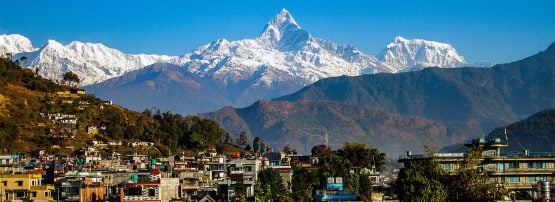
At npNOG 11, Dileep Agrawal, Founder and Chairperson of WorldLink Communications, delivered a compelling closing keynote titled ‘Connecting everyone, anywhere, all the time: Closing the digital divide’ (slides). It’s a concise 15-minute presentation that’s well worth watching, especially for those interested in the practical realities of deploying broadband infrastructure in challenging environments.
Building broadband
Nepal has made significant progress in broadband connectivity. As of now, 47% of its population is online via broadband, placing it ahead of its South Asian neighbours, and even among the leaders in parts of South East Asia. Of roughly 7M households, around 3M now have fixed-line broadband access. This is achieved using infrastructure and customer premises equipment comparable to those found in more developed economies, but delivered at a price point aligned with Nepal’s Gross Domestic Product and affordability constraints.
What makes this particularly noteworthy is the level at which these deployments are being carried out — often by local teams working in difficult conditions to deliver physical layer (Layer 1) connectivity across varied and often extreme terrain.
The rural divide
Nepal’s geography presents unique challenges. While fibre rollout is relatively straightforward in urban centres, much of the population lives in dispersed rural areas, divided by the Himalayas — truly some of the most extreme terrain on Earth. These regions are not only remote but also difficult to serve with traditional 4G mobile infrastructure, due to the sheer number of masts that would be required to overcome the topography.
In response, the government has explored several regulatory approaches. One example includes granting conditional licences: ISPs providing rural services via technologies like Very Small Aperture Terminal (VSAT) could qualify for urban operating licences later. However, the high baseline cost of VSAT, combined with limited performance, made this model unsustainable. Likewise, a proposal by the Asian Development Bank to support WiMAX-based deployments stalled due to local lobbying and other implementation barriers.
Policy, pricing, and potential
Agrawal advocates for a shift in how connectivity projects are financed and taxed. He calls for regulatory reforms that make rural deployment more economically viable, including long-term investment incentives and changes to tax structures. He also questions why Nepal has not opened up to providers like Starlink, as neighbouring Bhutan and many other Asia Pacific economies have done — particularly given the suitability of Low Earth Orbit (LEO) satellites for remote and mountainous regions.
He further argues for a transition from voice-centric to data-centric mobile business models and suggests community-led Wi-Fi projects as a way to empower local access where large-scale infrastructure is not feasible.
Reframing universal service
Agrawal’s keynote is candid and pragmatic and particularly relevant for ISPs and policymakers grappling with universal service obligations in similarly challenging environments. It raises broader questions about how governments and the technical community can rethink the ground rules for supporting Internet access in the hardest-to-reach areas.
Urban connectivity is largely a solved problem. The next step is extending that progress to the communities who are not only unconnected but who stand to benefit the most from being brought online.
Watch Dileep Agrawa npNOG 11 keynote.
The views expressed by the authors of this blog are their own and do not necessarily reflect the views of APNIC. Please note a Code of Conduct applies to this blog.
